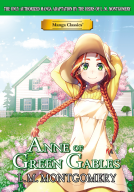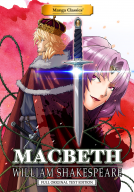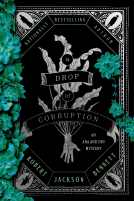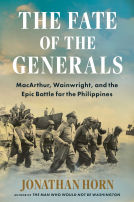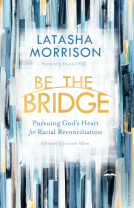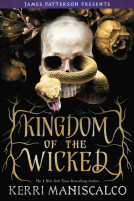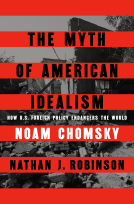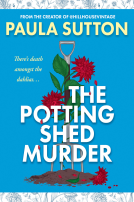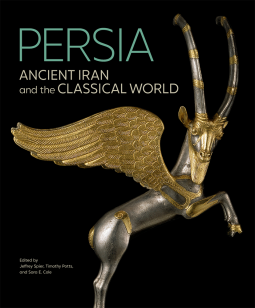
Persia
Ancient Iran and the Classical World
by Edited by Jeffrey Spier, Timothy Potts, and Sara E. Cole
This title was previously available on NetGalley and is now archived.
Send NetGalley books directly to your Kindle or Kindle app
1
To read on a Kindle or Kindle app, please add kindle@netgalley.com as an approved email address to receive files in your Amazon account. Click here for step-by-step instructions.
2
Also find your Kindle email address within your Amazon account, and enter it here.
Pub Date Apr 26 2022 | Archive Date Aug 11 2022
Getty Publications | J. Paul Getty Museum
Talking about this book? Use #Persia #NetGalley. More hashtag tips!
Description
The founding of the first Persian Empire by the Achaemenid king Cyrus the Great in the sixth century BCE established one of the greatest world powers of antiquity. Extending from the borders of Greece to northern India, Persia was seen by the Greeks as a vastly wealthy and powerful rival and often as an existential threat. When the Macedonian king Alexander the Great finally conquered the Achaemenid Empire in 330 BCE, Greek culture spread throughout the Near East, but local dynasties—first the Parthian (247 BCE–224 CE) and then the Sasanian (224–651 CE)—reestablished themselves. The rise of the Roman Empire as a world power quickly brought it, too, into conflict with Persia, despite the common trade that flowed through their territories.
Persia addresses the political, intellectual, religious, and artistic relations between Persia, Greece, and Rome from the seventh century BCE to the Arab conquest of 651 CE. Essays by international scholars trace interactions and exchanges of influence. With more than three hundred images, this richly illustrated volume features sculpture, jewelry, silver luxury vessels, coins, gems, and inscriptions that reflect the Persian ideology of empire and its impact throughout Persia’s own diverse lands and the Greek and Roman spheres.
Available Editions
| EDITION | Other Format |
| ISBN | 9781606066805 |
| PRICE | $65.00 (USD) |
| PAGES | 432 |
Featured Reviews
As an art history student, I was introduced to Persia from the perspective of Rome and Greece. In the last few years, I’ve noticed and read a number of books telling a broader story, one written with a more balanced view, sharing discoveries from archaeology which add new dimensions about this fascinating period of time. It was with curiosity that I picked up “Persia” having read a well-written narrative on Persia which had no accompanying visuals. As Persians were such an artistic and creative people, with distinct clothes, architecture and symbolism, I eagerly opened this book to see the history rather than just read it.
This book is by no means light on narrative, were you to just read this one, you would understand Persia, it’s rise and fall, it’s lasting influence and it’s idiosyncrasies but, you also get to look at magnificent artworks and read about the meaning and purpose of each. The visuals are large and I found myself examining some of the pieces for several minutes, mesmorised by the intricracies. Being placed geographically where it was, and with the travel the Persians did across the continents, it’s interesting to see influences from other places on the art and visa versa.
It is a beautifully written journey through time with stunning art and sculpture, if you love history and art, do read this one! It’s a five out of five on the enJOYment scale and highly recommended.
I received a complimentary copy of the book from Getty’s Publications through NetGalley. Opinions expressed in this review are completely my own.
Persia: Ancient Iran and the Classical World broadened my understanding of the classical world beyond my somewhat parochial understanding of Greece and Rome. It covers over a thousand years of history, from the rise of the Achaemenid Empire in 550BC to the fall of the Sasanian Empire in 651CE. It's a broad span of history, but the editors break everything down into easy to understand sections.
There are seventeen essays in the book by various scholars that cover lots of different angles, such as the evolution of religion, the development of royal iconography, the influences from both the Hellenic west and the Hunnic East. The catalogue entries add even more perspectives on specific objects, so there is a lot to sink your teeth into in this catalogue. I particularly enjoyed a mini essay on the Jewish art under the Sasanians.
Still, the book was crying out for an essay about the archaeology of the Persian empires. I was left wondering where many of the objects came from and how they survived: Were they grave goods? Were they treasure caches? What objects likely did not survive? How were surviving goods used by later cultures? How far did trade goods get from Iran? The answers are few and far between in the present essays.
Thank you to Netgalley and to the publisher for giving me this eARC to review.
This is a beautiful and very in-depth book about Persia that holds a vast amount of information and history as well as a plethora of maps and beautiful photographs.
This is a very beautiful book that is far more informative than I had expected but I am extremely grateful for this. I had expected something more akin to an exhibition program but this book far exceeds even the most comprehensive of programs.
The text is scholarly but still accessible to those with little or no knowledge of the subject and thanks to the very detailed sources, reader's can easily explore the subject beyond the book.
The photographs and descriptions are so detailed and wonderful that reading this book truly is the next best thing to seeing the exhibition in person.
I do have to say, though, that I found the use of BC/AD extremely odd. The book's description uses the more modern and scholarly BCE/CE but the actual text does not. I found this very strange and also disconnected from the subject matter.
I tried looking up the members of the science committee and, to the best of my knowledge, there is no direct Iranian involvement. This seems like a massive oversight to me, especially in this day and age, where readers want to see direct connections between the subject and the authorities discussing it.
I feel that I also must mention that no acknowledgement is made in regards to the artefacts being held by museums and private collectors in countries other than Iran. In fact, no item was contributed by an Iranian source. It's no longer acceptable to disregard or overlook the role looting has played in the development of such collections.
This book is sure to delight fans of ancient history, classical antiquities, and art history.
Thank you to NetGalley and Getty Publications for giving me a free digital copy of this book in exchange for an honest review.
 Librarian 431790
Librarian 431790
These books are always an excellent way to learn as they mix gorgeous pictures with academic text.
I loved this one as I'm fascinated by Persia and its civilizations.
I loved the pictures and the texts were interesting.Highly recommended.
Many thanks to the publisher and Netgalley for this ARC, all opinions are mine
 Media/Journalist 900420
Media/Journalist 900420
Persia: Ancient Iran and the Classical World combines scholarly research with high quality photography that conveys stories of the past as well as exhibit fine Persian craftsmanship. While scholarship is in-depth, it can be read by those who have a basic understanding of the ancient and classical world and wish to gain a deeper perspective of the artistic and cultural connections between the rival powers of Iran, Greece and Rome
Anyone expecting just a pleasant coffee table book to accompany the Getty Villa's Persia exhibition will be surprised and delighted to find that this is so much more! This is an exquisitely detailed exploration of ancient Persia and the interaction of empires and governments all over the ancient world. Essays explain not just the rise and fall of rulers and empires, but how their interplay shaped the world and what their legacies were. Works of art are intricately cataloged and discussed both in terms of technique/aesthetics and what the artist or commissioner was trying to accomplish.
This is very information-heavy and best savored in small doses to truly appreciate and absorb everything. This is honestly on par with a decent university textbook, at a fraction of the price! This will make a wonderful addition to the shelves of both history and art lovers!
Many thanks to the publisher and NetGalley for the opportunity to read and review!
This is a beautiful and solid book, without a doubt. The artworks on display and the illustrations accompanying the texts are stunning. And the contents of the book is absolutely interesting, covering more than 1.000 years of glorious history: the ancient Persian empire, the first truly cosmopolitan empire, Parthia, the underrated challenger of the Roman Empire, and the Empire of the Sasanians, that magnificent predecessors of Islamic civilization. These empires all have Iran as their heartland, hence the reference in the title. But… isn't it striking that not a single Iranian expert has contributed to this book? And that the works on display all come from Western museums? The explanation is perhaps not far to seek: the isolation Iran currently finds itself in, of course largely the fault of the harsh regime in Tehran itself. But the country is so much more than the Ayatollahs. Therefore, I do not understand that the editors of this book and the curators of this exhibition have not attempted to put together a more balanced scientific committee, to compensate for the lack of direct Iranian cooperation. It's a stain on an otherwise excellent coffee table book. Thanks to Netgalley for the Advanced Temporary Reading Copy..
 CASPER H, Bookseller
CASPER H, Bookseller
Persia, edited by Spier, Potts, and Cole is a beautiful book. The photographs and the essays accompanying them in explanation are crisp and greatly explanatory. This is as close to seeing these artifacts from the ancient world as most of us will ever get, but boy are they very well done.
I was expecting a book primarily filled with photos of ancient artifacts, but this book is so much more. Chock full of history and ancient reference maps, this book is separated into the Achaemenid Empire, the Parthian Empire and the Sasanian Empire, which covers 550 BC to 651 AD.
At the risk of admitting my ignorance, everything in this book was new to me. I found it fascinating, and I wish this could have been a history book that we used in school. The artifact photos are excellent complements to this well-laid out and well-presented history of ancient Persia.
Thank you NetGalley and Getty Publications for providing this ARC in exchange for my honest review.
 Reviewer 651828
Reviewer 651828
"Persia: Ancient Iran and the Classical World" presents Persian history and artifacts through a fascinating lens--namely, through Persia's longstanding relationships with Rome, Greece, and the rest of the classical world.
The book offers both an overview and a fairly specific view of Persian history through a series of essays that provide the reader with the background necessary to contextualize the beautiful photographs and their origins. Naturally, there's a lot (a LOT) of material to cover. Persian history is rife with complex politics, conquest campaigns, various dynasties, and so on. The learning curve might be a little steep for someone entirely new to the subject. That being said, it's a terribly attractive place to start given how clear and erudite the essays are and how beautiful the art is.
Recommended for anyone interested in Persian history, classical antiquity, and art history.
Thank you to Netgalley and Getty Publications at the J. Paul Getty Museum for giving me an eARC of this book in exchange for an honest review.
 Sage S, Reviewer
Sage S, Reviewer
Persia: Ancient Iran and the Classical World is the companion book to a coming exhibition at the Getty Museum presenting a very large number of artifacts from Ancient Iran -- radically and wonderfully! -- in the context of the international foreign relations of the day. There are works by Greek artisans made for the shah. There are works by Persian artisans that ended up...all over the place. There are all kinds of items indicating royal public relations, sabre rattling, propaganda -- especially between Persepolis and Rome -- as well as beautiful gifts, and relics of extraordinary artistry in numerous media.
I have a fair (not great but fair) background in Persian/Iranian history, and I have seen photos of several of these items before, but the vast majority were brand new to me. Most awesome, the myth that "nothing exists from the Parthian Era" gets completely busted in the exhibition of surviving ancient silverwork.
The articles contained in this volume do a great job at synthesizing the entirety of Iranian-Persian history up to the Arab invasion in the 650s (CE). The text is concise but up to date, and the bibliography is epic.
I did have two concerns, though. First, the date format is BC/AD, which I haven't seen in a while and seems culturally irrelevant and odd. Second, there is no mention at all of the conversations enveloping the museum-world concerning repatriation of historical items clearly belonging to other sovereign powers and which exited those countries directly through Western colonial/imperial actions. I do realize that in cases where the find-site is unknown, one can't necessarily know which modern country corresponds to the item's location in the vastness of the old Persian Empire. Likewise, anything found in Sogdiana could be claimed by any of four or five Central Asian countries now.
Of course, the Getty has no vested interest in repatriating possessions that get patrons in the door, and we aren't talking about the Benin Bronzes or the Parthenon Marbles. But it still seems like they ought to acknowledge the state of repatriation issues concerning these materials.
Anyway, I am sad that I won't be able to see this exhibit in person and I'm incredibly glad to have seen them in microcosm in this book.
ARC
An absolutely gorgeous coffee table book about a particularly rich time in history. The images are lovely (and huge!!) and the essays accompanying them are fun and informative. A lovely book.
So, I just took a delightful journey through "Persia: Ancient Iran and the Classical World," and let me tell you, it's like time-traveling but without the complicated machines. As a lover of both cool photos and ancient stories, this book was basically my sweet spot—a mixtape of Persia's encounters with Greece and Rome.
Starting from the sixth century BCE, when Cyrus the Great founded the first Persian Empire, it's like witnessing the OG world power unfold. The Greeks, always the drama queens, saw Persia as this crazy rich and powerful rival. And, oh boy, when Alexander the Great swoops in around 330 BCE, it's like a cultural explosion, setting the stage for the Parthian and Sasanian dynasties. Drama, politics, and some major cultural exchange—the whole shebang.
"Persia" dives deep into the nitty-gritty of Persia's bromance, frenemy situations, and artistic flings with Greece and Rome. International scholars spill the tea on politics, intellect, religion, and art. But what really got me? The pictures. Over three hundred of them, showcasing everything from badass sculptures to blingy jewelry, giving a front-row seat to Persia's grandeur. It's like flipping through a travel scrapbook, only this one covers an entire empire.
As someone who's all about visuals and soaking up history without feeling like you're in a lecture, this was a blast. The combo of smart people talking history and jaw-dropping photos took me on this epic adventure without moving an inch. You get to appreciate not just the facts but the vibe, the culture, and the intricate dance between Persia, Greece, and Rome.
In a nutshell, "Persia" is like a chill hangout with history. It's not just informative; it's like your cool friend narrating stories from back in the day while flipping through an ancient Instagram feed. For fellow lovers of beautiful photographs and epic tales, this one's a must.
A wonderful rendition of the fascinating, richly varied history of Persia. The photographs are stunning, the visual impact bringing the artwork and architecture to vivid life. The perfect gift for any lover of the ancient world, and perfect for the coffee table.
Thanks to NetGalley, the author and publisher for my ARC.
4 stars.
Persia: Ancient Iran and the Classical World, edited by Jeffrey Spier, Timothy Potts, and Sara E Cole, is as impressive an introduction to the interactions between Persia, Greece, and Rome as it is an attractive coffee table book.
To say my knowledge in this area is sketchy at best is putting it mildly. While there was a little overlap with some things I knew a little about this was largely new information for me. The wonderful essays coupled with the superb illustrations brought the history to life, as well as giving me a new appreciation of the period and the region.
The essays are accessible but are also more scholarly than what you might find in many exhibition catalogues. The notes at the end of each essay and the extensive references cited section at the back of the book offer wonderful opportunities to pursue more information on whatever areas most appeal to you.
The actual catalogue sections offer wonderful short explanations of each item as well as a nice photograph. This book will be both visually and intellectually satisfying.
Reviewed from a copy made available by the publisher via NetGalley.
Readers who liked this book also liked:
L.M. Montgomery, Crystal S. Chan, Kuma Chan
Children's Fiction, Comics, Graphic Novels, Manga, Teens & YA

